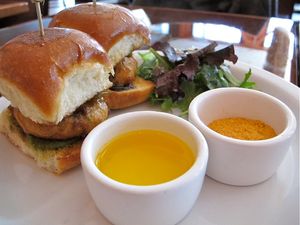This week's tablehopper: highway to the danger zone.
The delicious vada pav at Dosa on Fillmore. Photo: © tablehopper.com.
Why hello there. You enjoying the 11-11-11 juju? This week has been over-the-top fantastic, from a Haven preview dinner while perched at the counter at Plum in Oakland (can’t stop thinking about chef Kim Alter’s gossamer-thin fettuccine with pancetta and egg), to lunch at Dosa on Fillmore and the riveting Pop Up Magazine event on Wednesday night (followed by a late-night dinner of French onion soup at Absinthe—and of course the soft garlic pretzels were on our table), to a home-cooked meal last night, paired with quite the lineup of old Burgundy. (Sommeliers in your life can bring you the best of times, and the worst of times—fortunately last night was all about the best.) Tonight I’m throwing a little gas on the fire: it’s going to be a night of tablehopping with two dear bartender pals in North Beach—yeah, bring on the hurt!
So, I was very mistaken in thinking my birthday was going to be relegated to a week. It has rapidly become apparent that it’s going to be a month of total liver punishment. Ends up some friends are whisking me off to Vegas on Sunday for a 48-hour whirlwind—we’re going to see Don Rickles (so excited), and of course there is some serious eating to be done. Does Virgin offer dialysis on the plane ride home?
So what does this mean? It means tablehopper won’t be showing up in your inbox until Wednesday. I know, so weird. But who am I to turn down a trip to Vegas? Exactly.
For today I have a little fresh meat for ya, plus a bookworm. And since misery loves company, there’s a lush mention for you as well.
See ya next Wednesday!
fresh meat
New Restaurant Reviews (I'm looking for somewhere new to eat)
Boxing Room
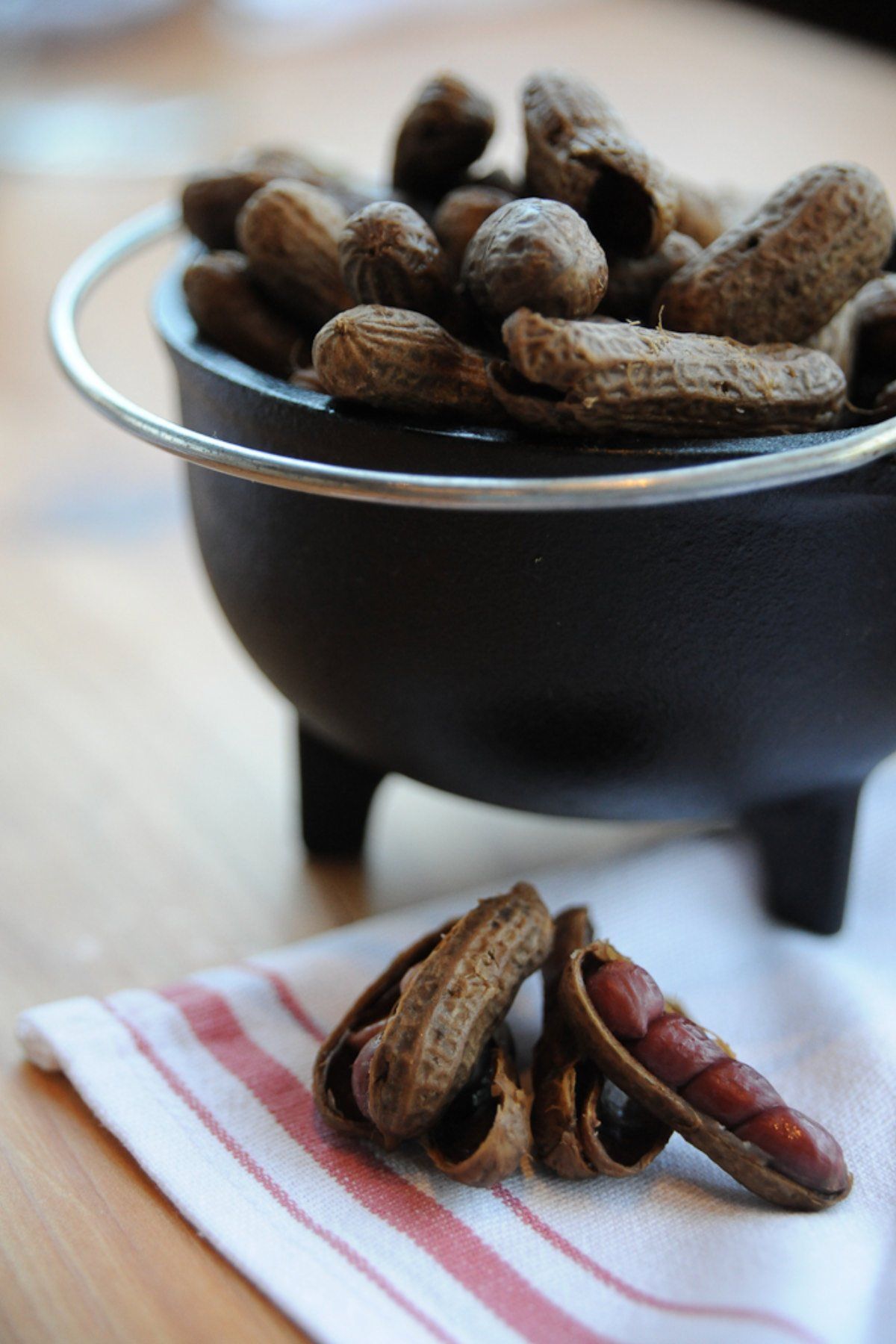
Cajun boiled peanuts. Photo: Liza Gershman Photography.
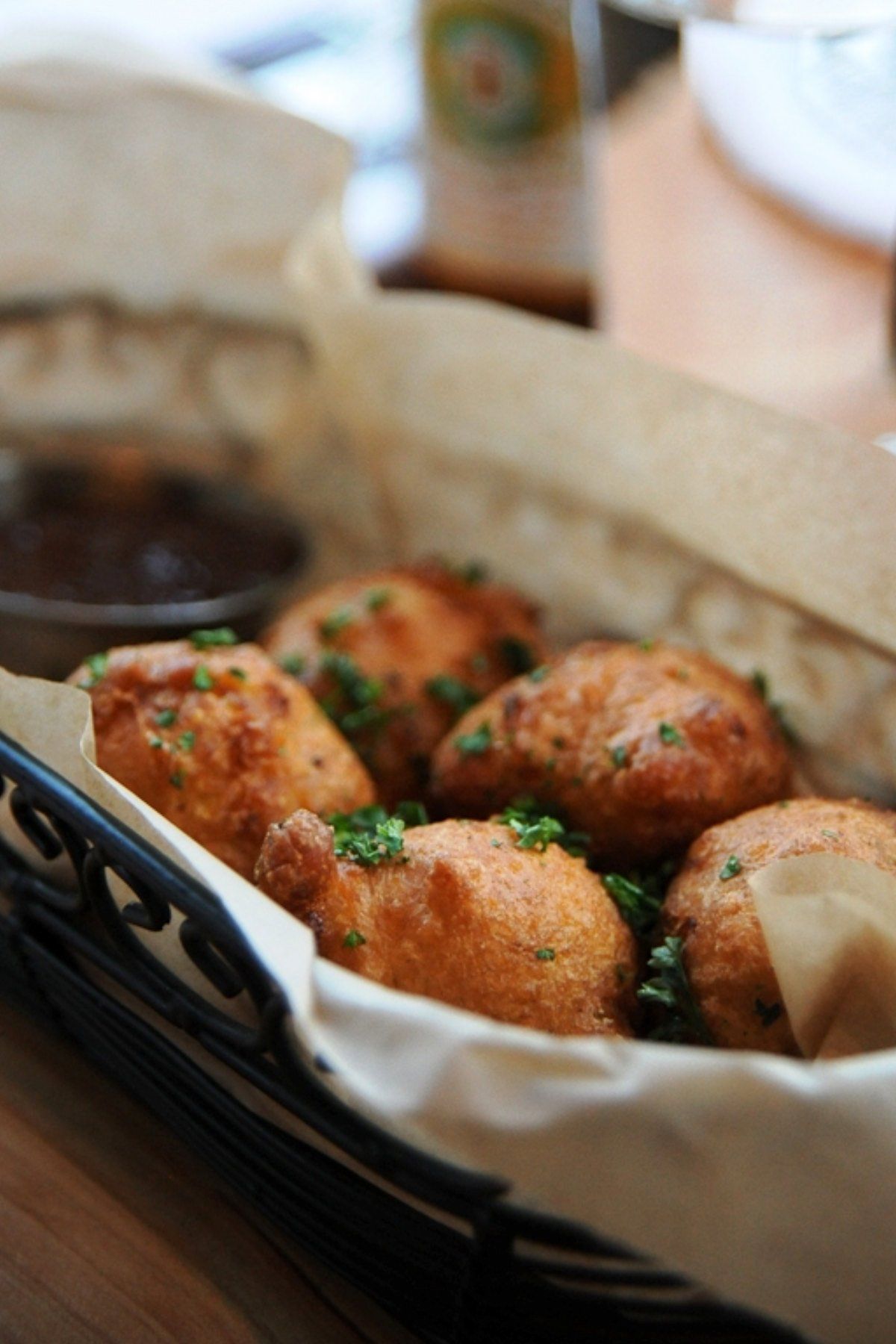
Hushpuppies. Photo: Liza Gershman Photography.
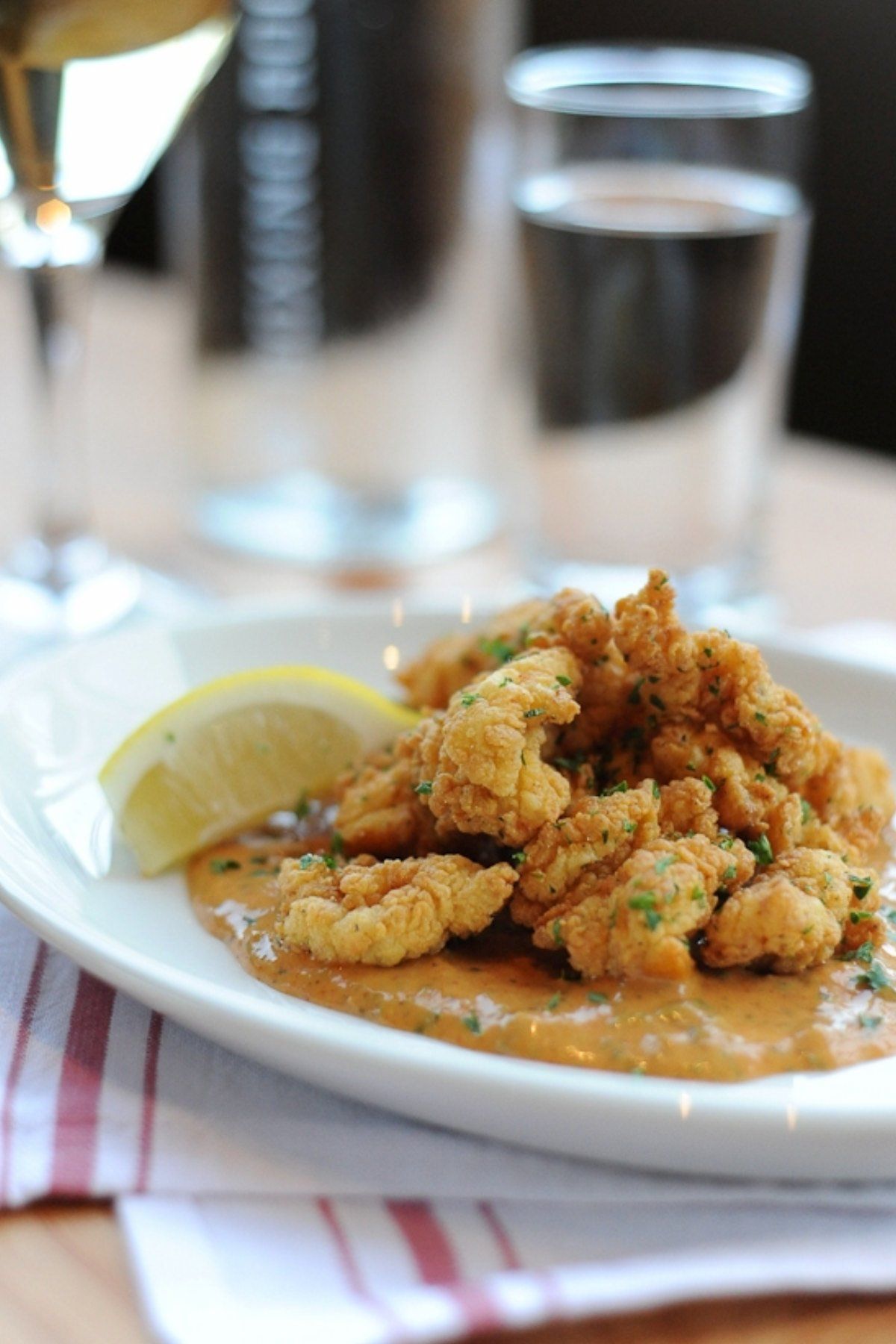
Deep-fried alligator. Photo: Liza Gershman Photography.
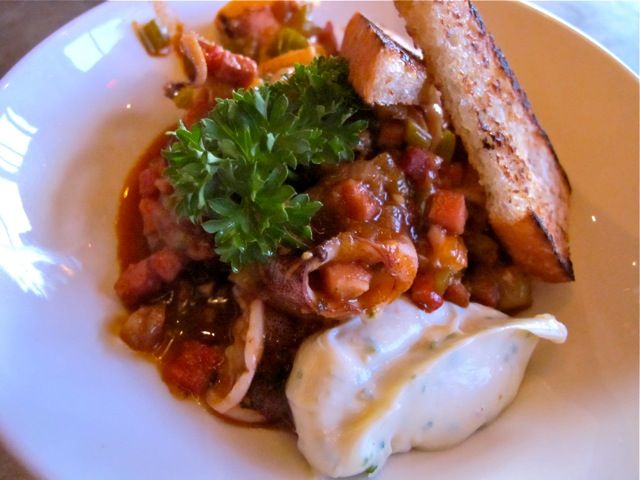
Charred Monterey squid. Photo: © tablehopper.com.
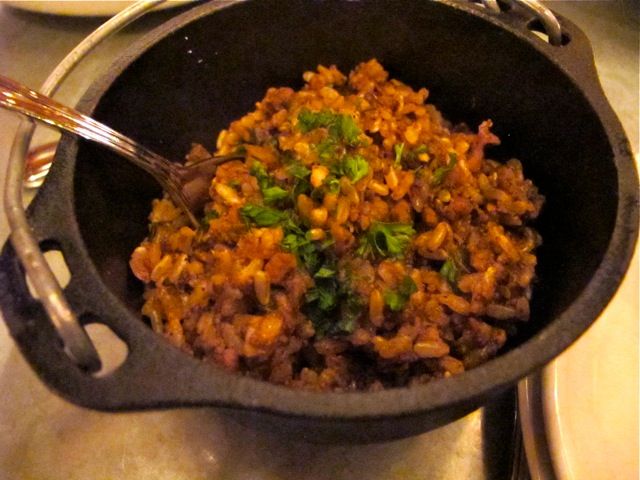
Dirty rice. Photo: © tablehopper.com.
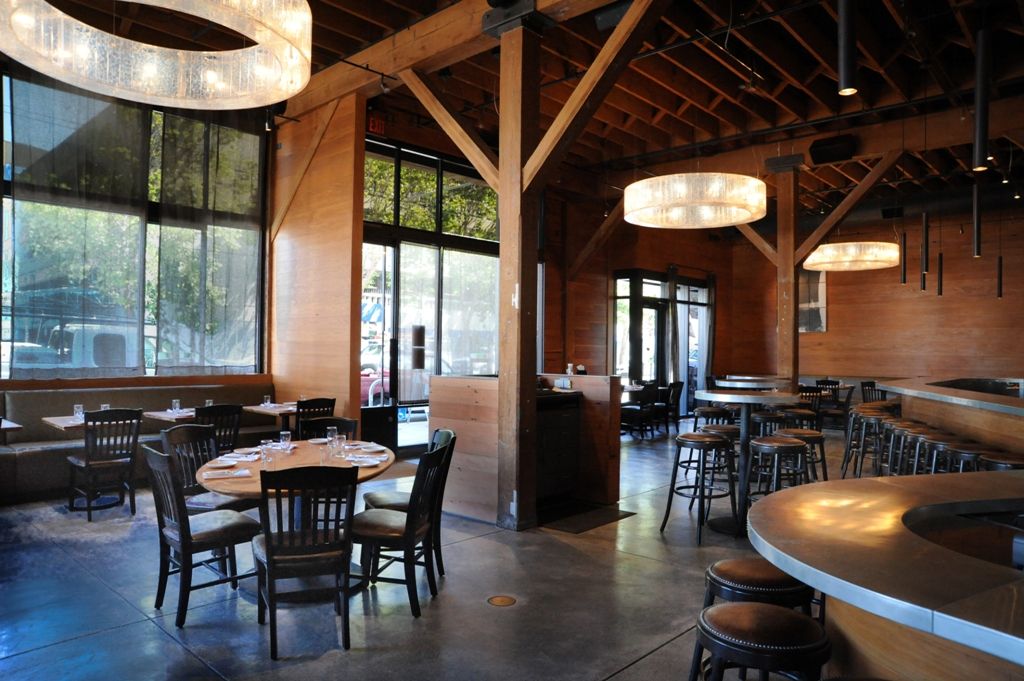
Dining room. Photo: Liza Gershman Photography.
It’s a hard job to name restaurants. Some places nail it from the beginning (Bix, Frances, Canteen), while others seem to grow into their names with time (nopa, Cotogna, Serpentine). I’m not quite sure I see that strong a connection between the name of the BOXING ROOM and its space and concept—the building originally housed the Standard Shirts Factory (dating back to 1886) and the restaurant is located in what was the boxing room. But in the end, we don’t really return to a restaurant again and again because it successfully executed a cohesive concept based on an inspired name. We return for dirty rice.
Chef Justin Simoneaux is a southern Louisiana native who has been cooking locally in some very Californian restaurants (COCO500, The Moss Room), so his menu is a balance of the two places, teetering between the fried and the farm-to-table. Plus you’ll note some French technique and flair from his two years while at Le Petit Robert. It’s an extensive menu, suited for all kinds of occasions, whether you’re swinging by for a bite and a glass of wine before a performance at the symphony, a hangover lunch (or brunch), or a late-night burger. It serves the neighborhood well—I just wish they had a full liquor license so they could over-serve me well. But the long list of 20 beers on draught (assembled by GM Zach Pacheco) is appealing, with local beers like the Red Rocket from Bear Republic Brewing in Healdsburg, and not-from-here beer, like Allagash White from Maine, and even some Belgians.
A focal point of the room is the oyster bar, offering a selection of five different kinds each night, primarily hailing from the West Coast. Fresh as can be. Unfortunately the shucker didn’t live up to the perfection a $30 price tag for a dozen oysters demands: we had shell shards in two of our six oysters, and a few barely had any liquor left in them. Meanwhile, a trio of charbroiled oysters ($10) came piping hot in garlic-herb butter, but the breadcrumbs on top couldn’t survive the buttery bath—they made for a sodden topping.
You wanna know where the oysters shine? In the fried Pacific oyster salad ($12), that’s where. They were cooked beautifully, sporting a burnished color but not too much coating, and plump and juicy within—an inspired match with tender arugula and fennel dressed lightly with an Herbsaint vinaigrette. The fried seafood po’ boy ($18 for the oyster version) is another showcase for the oysters—it overflows with them. The house pickles and tartar sauce within lend a homemade touch, and you also get some hushpuppies on the side. Generous, that plate. They should add fried oysters to the menu as an app—they’d sell like crazy.
The lagniappe section lives up to the “little something extra” provenance of its name: for $5 each, you can snack on Cajun boiled peanuts (messy, spicy, and kind of like Cajun edamame), slices of a hog’s head terrine (but I think this dish would benefit from being served with some toasts), and the hushpuppies, sweet with whole pieces of corn and a pepper jelly on the side. But it’s the crispy boudin (say “boo-dan”) balls that steal the show. They’re fried balls of what is basically dirty rice (our server described them as Cajun arancini) tricked out with liver, ground pork, and more that you dip into a tangy Creole mustard sauce—nope, there’s nothing wrong with that picture.
Starters like the charred Monterey squid ($10) appealed to my table of ex-smokers, a saucy dish with pieces of housemade tasso, the trinity of Cajun mirepoix (bell pepper, celery, onion), and a dollop of roasted garlic aioli on the side. Deep-fried alligator ($11) was some of the most tender I’ve had (Simoneaux only uses the tail meat from wild gator flown in from Louisiana, and soaks it in buttermilk), but the plate paved with the delicious Creole rémoulade was unnecessary—would rather have it on the side for my own dipping discretion. (And I’d like a jar of it to go, thanks.) The fingerling potato salad ($11) didn’t quite bring it home: the fingerlings (served whole) were grainy, but I liked the way the shredded ham hock tangled with the frisée.
Classics on the menu like crawfish etouffee ($14/$21) totally deliver. The tails are tender, plentiful, and the tomatoey sauce is deeply seasoned and satisfying (chef uses lobster in his shellfish stock). There are popular daily specials, and let me tell you, you want to come on a Thursday when you can have the duck and sausage jambalaya ($20). A brilliant, meaty dish, with the right amount of heat and spice, and the crisp, confited duck leg nestled on the plate takes it over the top. Chef, put it on the nightly menu!
The Southern fried chicken ($19) wasn’t going to usurp any of my favorites in town—I ended up shaking hot sauce on it to perk it up. But the kitchen seems to sell a lot of it, so maybe it’s just me. The burger ($14) is well seasoned (Simoneaux’s grandma’s recipe calls for quite the spice mix) with a pleasing grind, and it was nicely assembled, but unfortunately my requested medium rare was more like medium well—but I’ll return for it again. And the crisp steak fries were on point.
There’s a nightly meaty selection offered (“tonight’s boucherie”), and while the suckling pig ($23) came out dry, at least our choice of two sides allowed us the opportunity to try the mirliton (chayote) casserole, which tasted like a cross between cardoon, celery, and melon, with béchamel, cheddar, and Parmesan cheese all over it. Dude. But alas, it looks like I am gonna have to wait until next summer for it to come back into season. The side you will adore is the dirty rice, authentically made with gizzards. Order it as a side ($6) no matter what—it comes in a little cast iron cauldron that you’re going to see the bottom of.
Desserts from Bill Corbett include a decadent pecan pie (all desserts $7)—as my dining partner said after his first bite, “I think I just became diabetic.” Great crust on that thing. I wanted to love the bourbon banana split, but the bourbon ice cream didn’t really smack of bourbon, and the soft banana was, well, let’s just say it didn’t get finished. Instead, the fluffy beignets are a safe bet.
Service on all three visits was enthusiastic, although sometimes a little quirky, too. The place is well staffed to make your meal move quickly if you have a performance to catch, so just let your server know. The wines (Ian Becker co-curates the wine list) are food friendly and easy on the wallet (like the Marcel Lapierre Morgon gamay noir for $44, so delicious with dinner), but the wine temp was served too warm.
The corner space used to house Citizen Cake, and Sagan Piechota Architecture and Bernardini Construction are behind the transformation. The custom round chandeliers are striking, and the Douglas fir planks on the walls are original to the space, and almost feel Cochon-like. The room has a variety of different seating options, from the curving zinc bar with room for 24 guests, to high-top tables, to a banquette along the walls with cypress tables, to booths that would be a good spot for a casual first date. I’ve also seen kids on a couple visits.
For a Southern place, I would have liked to see a bit more personality in the details, like the artwork, the silverware, the dishes, the napkins…. There was a missed opportunity to let things be a little funky. The acoustics are uneven in the room, and one night at 10:30pm, it just felt flat. For a place serving until midnight (and 1am on the weekends), a little more tuning of the ambiance would be welcome, like lower lights as the night goes on—it always feels too bright to me.
It’s an easy space to swing by for a variety of times during the day—I appreciate the continuous hours. I know I will get hankerings for everything in the lagniappe section (so good with a beer), and that duck jambalaya will make me time my visits for Thursdays. The place is very close to letting the good times roll—but for now, the soul resides in the dirty rice.
Boxing Room - 399 Grove St. San Francisco - 415-430-6590
the lush
Bar News & Reviews (put it on my tab)
Yup, It's Time for the Release of Beaujolais Nouveau
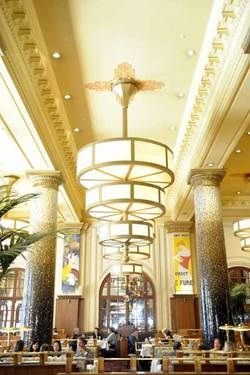
Photo courtesy of Grand Café.
Le Beaujolais est arrivé. Well, not quite yet. You see, French law mandates that Beaujolais Nouveau may not be uncorked until 12am on the third Thursday of November. But there’s no need to travel to France for the celebration because there are a few places in San Francisco where you can partake on Thursday November 17th!
On the classier side of things, ARLEQUIN WINE MERCHANT will be pouring 20+ wines at their sixth annual celebration featuring 2010 Cru Beaujolais and 2011 Beaujolais Nouveau from top Beaujolais vignerons (producers include Marcel Lapierre, Guy Breton, Jean-Paul Brun, Alain Coudert, Jean-Paul Thévenet, Jean Foillard, and Joseph Chamonard). The event is a rare chance to try bottlings from the top 10 cru villages of Beaujolais alongside some modern nouveau styles. Featured vintners work with very little mechanical or chemical means in order to reflect the very best of the gamay grape. Wines featured at the event will be available for a 10% off purchase at Arlequin. $25; pay at the door. 6pm-8m.
GRAND CAFÉ is offering guests a taste of George Duboeuf Beaujolais Nouveau paired with an amuse bouche on the house. Listen to an accordion player while trying passed (and complimentary) hors d’oeuvres such as housemade duck sausage with quince chutney. Chef Alicia Jenish will prepare special entrées for the dining room including fried rabbit in gravy with a salad of watercress and heirloom apples. 4:30pm-8pm.
For those who want a full-tilt Nouveau experience, the VELVET ROOM at the Clift Hotel will be celebrating the release with a French-inspired DJ and can-can dancers performing burlesque. They will also be pouring Georges du Boeuf wines by the glass ($7) or by the bottle ($28) to go with a prix-fixe menu ($37) of French favorites. 8pm-11pm. 495 Geary St. at Taylor, 415-775-4700.
RIGOLO CAFÉ will be pouring the latest from Georges du Boeuf for the week of November 17th, but swing by on Saturday November 19th, when diners can enjoy a seasonal dinner while listening to Peter di Bono playing French music on the accordion. 3465 California St. at Laurel, 415-876-7777.
Salut!
Arlequin Wine Merchant - 384 Hayes St. San Francisco - 415-863-1104
the bookworm
Book Reviews (another place for your nose)
Bi-Rite Market's Eat Good Food: by Pete Mulvihill
Don’t forget: the book mentioned below is available at 20% off for tablehopper readers for two weeks following this mention at Green Apple Books—simply use the code “tablehopper” at checkout (either at the store or online) for your discount.
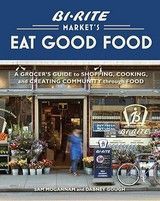
Bi-Rite Market's Eat Good Food: A Grocer's Guide to Shopping, Cooking, and Creating Community Through Food Sam Mogannam and Dabney Gough (Ten Speed Press)
Bi-Rite Market, in San Francisco’s Mission District, is a dazzling success story. What began as a diminutive, family-run corner store in the 1960s has evolved into something of a phenomenon, now requiring its own full-time security guard just to keep the clamoring crowds at bay. Bi-Rite owner Sam Mogannam has turned author in the new cookbook from Ten Speed Press, Bi-Rite Market’s Eat Good Food, and he wants to let everyone in on his simple secret—it’s the people as much as the produce that make good food taste great.
Eat Good Food isn’t just another recipe-laden tome with pretty pictures. Author Mogannam wanted to create something user-friendly that would be read from cover to cover, and the result is a grocer’s guide to shopping, cooking, and creating community through food. To be sure, Eat Good Food will walk you through all the steps necessary to make classic dishes like Sumac-Roasted Chicken du Monde or Apricot-Ginger Scones (which often sell out within hours at the market), but what really sets Eat Good Food apart from other cookbooks are Mogannam’s tips on selecting and storing the best ingredients. Yes, he covers the ‘thump test’ for selecting ripe melons, but that is only one indicator among many, and Mogannam covers them all. The same can be said for Sam’s tips on everything from meats, cheese, veggies, and even wine and beer—you will learn something by reading Eat Good Food. And if you want gorgeous pictures, Eat Good Food has those too, it seems like there is full-color on every page.
The core of Bi-Rite’s philosophy, however, is the relationship between the local food producers, the market’s staff, and most importantly, the trust of their customers, “…they know that if we carry it, it’s going to be good.” Read Eat Good Food, take part in the dialogue, and then watch whatever you cook go from good to great.
Thanks for reading.


